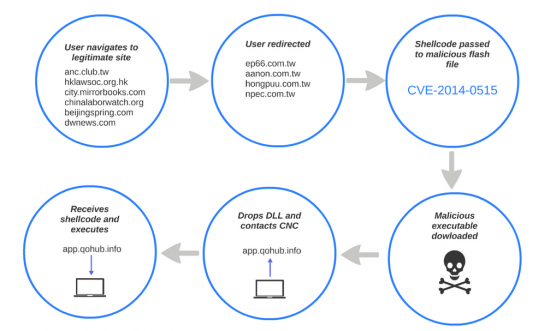ACI goes beyond SDN to help customers deliver business outcomes and not just network device programmability. That’s part of the reason over 175 customers signed up to trial the APIC during the hardware beta. Now Cisco ACI will start shipping to Data Centers worldwide on July 31! (See Soni’s blog)
From when we first announced the Vision for an Application Centric Infrastructure at Cisco Live Orlando in 2013, it’s been extremely exciting to see customers and ecosystem partners support this new operational model for centrally configuring, automating and operating network and security infrastructure.
The application model for abstracting network infrastructure requirements and policies really does address the operational needs of the infrastructure and application teams. That was by design, as Insieme’s engineering team worked with the leading cloud infrastructure customers of the world and our Cisco IT organization to incorporate their operational and application needs. In fact, IDC published a powerful report to confirm the ACI related 3 year OpEx savings forecast at Cisco’s IT Elastic Infrastructure Services (CITEIS), one of the largest data center environments in the world. Read the IDC Business Value Brief on Cisco ACI to learn more.
With the production APIC, customers can now begin running production applications on ACI. For insights into why our customers are deploying ACI, we spoke with the leaders of two world-class IT companies that are aggressively rolling out ACI within their own corporate IT.
Symantec IT is an early adopter of ACI and Sean Doherty (VP of Alliances Offerings, Symantec) spoke recently with Shashi Kiran (Senior Director, Cisco) about automating their IT infrastructure with ACI. About the Symantec IT environment, Sean said, “Some applications have been through the Physical to Virtual cycle and others are placed on clouds. We are looking to move those into a more modern agile environment. The ACI is providing the infrastructure to build out that new environment…”. Sean added that ACI helps in significantly accelerating the detection and remediation of security issues with business critical applications. Check out this YouTube video interview for the full story.
Representing another user adopting ACI, NetApp’s CTO Jay Kidd spoke recently about the ACI project in their global development lab. He said this is a large scale deployment covering 2300 racks of equipment wired end-to-end with 40G capacity with Nexus 9000. Talking about the lab, Jay stated, “One of the beauties of the (Nexus) 9K is the ability to gracefully transition and combine 10Gig and 40Gig together in the same infrastructure. Then with ACI, being able to build up these profiles for the applications or the test scenarios for those applications, store them, provision them dynamically. Anything we can do to make it easier for our developers to use this DevOps private cloud, we think will speed up the time to market and ACI is big part of that”. The Lab can spin up thousands of Virtual Machines per hour with an aggregate capacity of running well in excess of a million VMs at a given time. You can listen to Jay’s eloquent explanation on YouTube here.
Our Cisco sales teams have a great way to help Cisco customers to begin their own ACI deployments with the new ACI Starter Bundles. An ACI Starter Bundle (Fig 1) has everything you need to create an ACI POD including a resilient cluster of three APICs, two fixed or modular spine switches, eight 40G optics, and two or four leaf switches depending on which of the four bundles are selected.
Figure 1 ACI Starter Bundles include an APIC Cluster with 3 APICs and 8 40G AOC optics
- #1 Two Fixed Spine Switches, Four Leaf Switches with 192 Ports
- #2 Two Fixed Spine Switches, Four Leaf Switches with 384 Ports
- #3 Two Modular Spine Switches, Two Leaf Switches with 96 Ports
- #4 Two Modular Spine Switches, Two Leaf Switches with 192 Ports
Cisco customers can use ACI Starter Bundles 1 or 2 as policy appliance for flexible/ granular network virtualization and secure isolation in conjunction with their existing base of Nexus 2000 to Nexus 7000 (Fig. 2)
Figure 2 ACI Starter Bundles #1 or #2

ACI Starter Bundles #1 or #2 can also be used to scale out a UCS converged infrastructure solution such NetApp FlexPod and VCE VBlock. (Fig. 3)
Figure 3 Scale out UCS Converged Infrastructure Solutions

ACI Starter Bundles #3 or #4 can be used as a starting point to scale out private clouds with secure multi-tenancy since they are based upon the more expandable modular chassis. (Fig. 4)
Figure 4

When used in conjunction with the just released Application Virtual Switch, AVS, the APIC provides centralized policy based control and automation for any application composed of any number of server tiers containing any number of virtual or physical servers. These ACI starter bundles enable customers to begin ACI deployments for testing or production operations. The simple fixed price licensing for a set of leaf ports, 48 or 96, means there is no penalty for running lots of VMs per server vs. bare metal servers. (Fig 5) Customers can predict the cost of running their software defined network infrastructure.
Figure 5 No per VM Tax with ACI licensing

Contact your Cisco account manager to learn how the cost of an ACI POD is less than the cost of those dedicated x86 hardware gateways required with leading pure software overlay approaches. ACI delivers more scale, security, and performance at a fixed predictable cost with documented TCO benefits.
Many of our ecosystem partners announced at Cisco Live that they would be shipping their ACI Device Packages when Cisco’s APIC enters FCS. The following joint solutions have passed rigorous interoperability testing conducted jointly by the vendor’s and Cisco’s engineering teams in our own ACI testing lab. These partners demonstrate ACI’s open ecosystem for service integration, investment protection for existing ADC networks, and the benefits of a centralized control point for L2-L3 network and L4-L7 service policy coordination and automation.
- Cisco ASA security and Cisco ACI solution: Customers can now deploy Cisco ACI with Cisco ASA and its ACI Device Package to provide automated, policy-based security provisioning, management, and security policy updates, for firewall, intrusion prevention, and more.
- Citrix NetScaler and Cisco ACI joint solution: Customers can use the APIC to coordinate the Citrix NetScaler’s ADC unique application insights for optimized service delivery with ACI’s network automation and obtain end-to-end telemetry and visibility for service-aware applications and tenants.
- Embrane and Cisco ACI joint solution: With the APIC and Embrane’s ACI Device Package, ESM automates the deployment and lifecycle management of Embrane’s network virtual services as well as those from Cisco ASA, Sourcefire, and Citrix.
- F5 Synthesis and Cisco ACI joint solution: Customers can accelerate application deployment by automating insertion of SSL offload and L4-L7 SLB services using F5’s ACI Device Package and the Cisco APIC.
We are publishing interviews with the analysts, the leading practitioners that are hands on with ACI in August in an exciting ACI special edition of Unleashing IT. I’ll share the link for you here in a few weeks.
Today, we had some great news to share on Data Center and Cloud Networks. The Cisco ACI solution portfolio was orderable on July 1 and starts shipping July 31. This includes the four ACI starter bundles detailed above. For details on today’s exciting new Nexus switches announcement, please visit this blog – Nexus Flexibility Eases Transitions.
Links for more information
The Future of Networking, Available Today
8/15 Demo Friday: Watch Cisco ACI Enable Fast IT
IDC: Optimizing the Datacenter Network for Improved Scalability, Orchestration, and Automation
An Application-Centric Infrastructure Will Enable Business Agility
ESG: Accelerating Transformation with an Application-centric Approach
Cisco Application Centric Infrastructure and Cisco Nexus Switching: Delivering Investment Protection



CONNECT WITH US